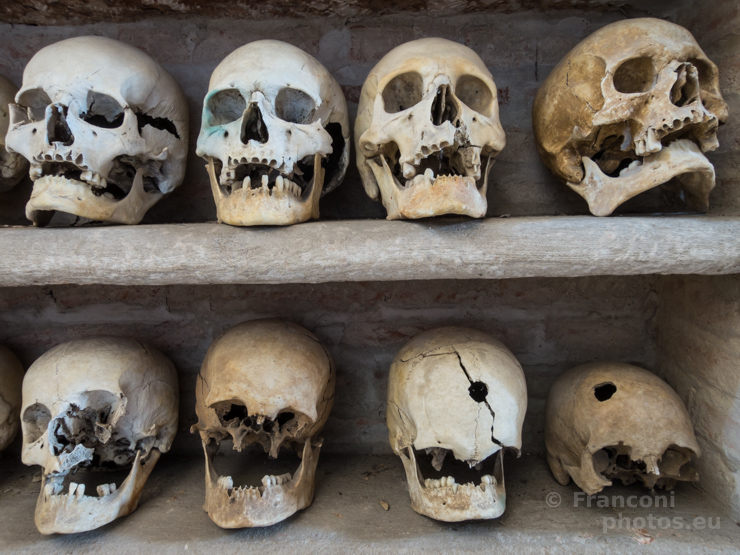Custoza, a name that remained impressed into my mind since a friend of mine talked about it. Many times I passed nearby on the highway but this time I decided to stop, to go along those narrow country roads that led me where history of Italy and Europe has been written.
“Goodbye my darling, goodbye” tells an old song that few words after goes along with “don’t cry my darling, maybe I will be back; but if I fall in the battle, in the sky I see you again”. Those where the times of Napoleon, Mazzini, Garibaldi, Carlo Alberto, of the Bersaglieri and the Grenadiers in the lands that in 1861 would have become Italy. During those times, souls were in turmoil. Blood poured during the many battles of the so-called “Risorgimento”.
Around the city and the countryside a prevailing patriotism feeling reigned. “Rataplan! I hear the drums; the flag calls me; which joy! Which happiness: I’m going to fight!”, these the words of the irreverent song “la bella Gigogin” full of allegories about the enemy and sang by the many volunteers that left to fight to make the Italian flag the flag of a nation.
In the hot July of the far 1848 the Sardinian Kingdom’s troops led by King Carlo Alberto clashed with the Austrian ones led by Marshal Josef Radetzky. The area of Peschiera del Garda became the theatre of dreadful battles where the popular Italian Bersaglieri got their baptism of fire. This was one of the fiercest battles of the first war of the Italian independence.
Later on, during the as much hot June of the year 1866, again in this area, they fought another fierce battle, this time fought during the third war of independence. In the town of Custoza the troops of the young Italian Kingdom led by General Alfonso La Marmora clashed against the ones of the Archduke Albert of Habsburg.
Between a battle and another, those fields from the Garda Lake and the Mincio River took the lives of many young soldiers. Ended the battles, it remained the common graves where bodies were stockpiled. Often it used to happen that farmers of that epoch found many human remaining of the unlucky soldiers, feeling compassion for those bones without name and without flag. During the year 1872 Don Gaetano Pivatelli became the priest of Custoza. He had to cope with the terrifying wake of war, a population proven and decimated and the remains of the fallen re-emerging here and there in the carelessness of the same institutions that sent them to fight.
In front of those skulls and bones the feeling of compassion and the desire of peace brought him to write to everybody. He wrote to the Italian King till the Austrian Emperor and thanks to his determination those skulls and bones are lying in a more dignified place that is the Custoza Ossuary.
Getting down the stairs you find yourself in front of those shelves full of ordered skulls, and it makes you think. 1894 people are resting there. Each skull was a person, who knows if Italian, Austrian or Hungarian. After all, it doesn’t even matter. They are all unified by the silence of death, the moment of its arrival still visible on the bones. Many skulls are partially destroyed while many others show grenade and bullets holes. In the centre of the Ossuary rest the “long bones”, a stockpile of well-ordered bones contained by crosses.
This is a place that invites the visitor to keep silence and to meditate over the meaning of life and war, on the value of peace and about the roots of a Europe when it wasn’t still a Union and people were dying for a piece of land. These meditations are constantly following me in my long project about the First World War, the last of the Italian Independence Wars.
“Enemies during life, death made them equals, compassion gathered them”, these the words written in Italian on the white marble of the mausoleum.
Practical info:
This Ossuary, placed in a contest of splendid hillsides full of wine yards, is just two steps away from the Garda Lake. It can be an easy trip jumping into history and enjoying a nice landscape. Here you can take many photos and you can challenge your passion for photography.
A kind guide accompanies the visit to the Ossuary while the access to the upper balcony with a 360° view over the hillsides is free.
One didactic room introduces you to the historical background and three screens tell the stories of the ones who fought those battles.
For any other practical info here there is the link to the official website of the Custoza Ossuary available in Italian, English and German.
© Franconiphotos – All rights reserved.
[flexislideshow pageid=”” lightbox=false lboxtitle=false slideshowtitle=false]
[thumbnails pageid=”” width=”206″ height=”137″]

